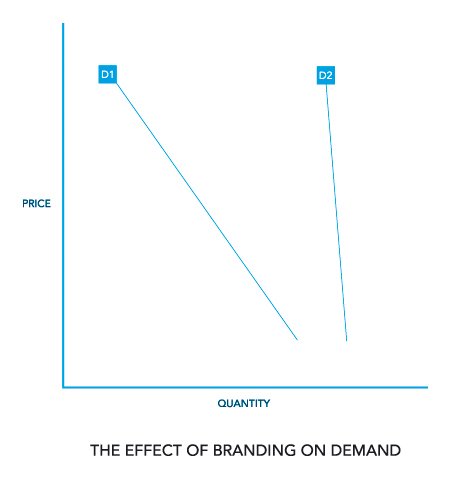The effects of branding on your business.
How important is your brand to your business? It’s critical!
Your brand is a short cut for the market to understand who you are, what you do, what you stand for, how you do it and for how much. In a split second the market has sized you up and made a decision to buy from you or not. Your brand is the face of the business and carries the responsibility to ‘tell’ the market about you.
This decision is becoming critical as the market is exposed to more and more choice, from more and more channels. Believe it or not, price is not the main factor in choosing a brand. Customers are willing to pay a bit more if they believe the brand will deliver on a promise.
So how does brand affect the bottom line?
A carefully built brand is worth more in actual dollars than all the tangible assets put together and is what will reap monetary rewards when you're ready to sell your company. This brand equity (the value associated with the brand) is an important factor to all businesses and should be a serious consideration in building the business. The first thing you have to do is decide how you want people to perceive your business, then figure out what you have to do to get there, and do it.
Organisations need to do everything possible to make their brands distinctive. The aim should be to persuade the market that your brand is unique, thereby protecting your brand from the direct competition of other brands. A strong brand suppresses or at least reduces substitution.
Economists describe this blocking of substitution as a reduction in the price elasticity of demand. The demand curve becomes more vertical (see fig. 1.1). A brand with an elastic demand curve – which is relatively horizontal – has many substitutes, and an increase in price will lead to a substantial loss of sales. A brand with an inelastic demand curve – which is relatively vertical – has few substitutes, and an increase in price will lead to little loss of business.
A carefully built brand also makes it easier for customers to decide to spend money with you. They trust your business will continue to service the market if the image is professional.
So what goes into building your brand?
Define your brand. What is the promise you want to communicate to the market that is different to your competitors? What does your brand stand for? What is it trying to say about your business? What is your price point? These questions will help in understanding the ‘truth’ about your brand and will make it easier for the business to guide the brand.
Management. Your brand needs to be managed day-to-day and year by year to make sure the reputation of the brand stays in tact and that you achieve the desired brand perception. You need a staff member to dedicate some time to keeping on top of the brand.
Consistency in advertising. The responsibility of advertising is to ‘sell’ your brand as clearly as possible and consistency helps get the message out. There’s an old saying: if you confuse them you lose them. All of your advertising needs to look consistent (NOT REPETITIVE). The best way of doing that is to decide what you can do for your customers that your competitors can't and focus on those points in every ad. Create a "sell line" that defines your company in a nutshell and use it.
Culture. One of the most forgotten areas of a business, and vital in building a brand. Staff are the personification of the brand and as such they need to communicate the values of the brand.
Only employ people who can get on board with your brand, and make sure that each person understands his or her part in building it. Once a customer is ignored at the counter or treated poorly on the phone or online or on the sales floor, you've lost not only that person but everyone else that hears about the unfortunate experience. Remember that word-of-mouth can help, but it can also hurt. Get rid of employees who won't cooperate-even if they're related to you!
Use the internet. A company with no web presence is archaic. Even if you're only interested in local sales right now, your customers are on the web, and they'll want to see you there too. It doesn’t have to be the slickest, it just needs to work for the business. It needs to engage the customer, allow them to communicate with you easily and capture useful information that the business can use. Get it done now.
Over the past two decade Simon Morris has worked at the top end of brand creation to become a highly respected brand leader. Simon brings considerable experience and talent to a wide variety of projects. Simon’s approach to brands and brand communication is to unearth the core essence of the brand then bring to life the differentiators and motivators of the brand and build a strategy that answers business objectives.
Take the first step towards a powerful brand transformation and contact us today to unlock your brand's true potential. Partner with us for unbiased expertise, fresh perspectives, and optimised resource utilisation. Elevate your reputation, mitigate risks, and make informed decisions to position your organisation correctly.

